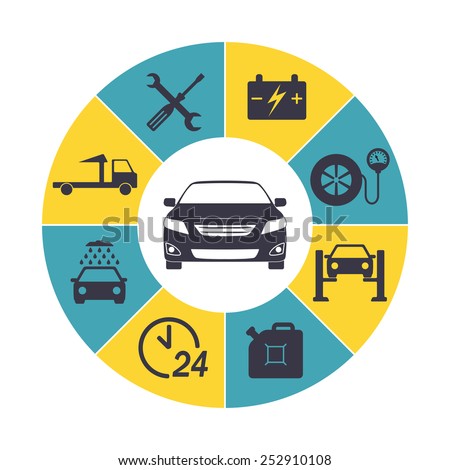Understanding Your Automobile'S Warning Lights: What Do They Actually Mean?
Understanding Your Automobile'S Warning Lights: What Do They Actually Mean?
Blog Article
Web Content Author-Kessler Mendoza
When you lag the wheel, those radiant warning lights on your dashboard can be a little bit puzzling. Do you recognize what they're trying to tell you regarding your cars and truck's health and wellness? Comprehending the relevance of these lights is essential for your security and the long life of your vehicle. So, the following time among those lights turns up, would not you wish to decode its message precisely and take the necessary actions to address it?
Common Warning Lighting and Interpretations
Identify common caution lights in your automobile and recognize their meanings to make sure safe driving.
One of the most regular caution lights consist of the check engine light, which signifies problems with the engine or exhausts system. If this light comes on, it's vital to have your automobile inspected promptly.
The oil stress cautioning light suggests low oil pressure, needing prompt attention to avoid engine damage.
auto repair financing flashing battery light might recommend a malfunctioning charging system, possibly leaving you stranded otherwise dealt with.
The tire pressure surveillance system (TPMS) light signals you to reduced tire pressure, affecting automobile stability and fuel effectiveness. Overlooking this might result in dangerous driving conditions.
The ABS light indicates an issue with the anti-lock braking system, jeopardizing your capacity to stop rapidly in emergency situations.
Lastly, the coolant temperature level warning light warns of engine overheating, which can cause serious damage otherwise settled swiftly.
Comprehending these typical caution lights will certainly help you attend to concerns promptly and preserve secure driving problems.
Significance of Prompt Attention
Understanding the common warning lights in your auto is just the very first step; the relevance of promptly resolving these cautions can not be highlighted sufficient to ensure your safety when driving.
When a warning light illuminates on your dashboard, it's your automobile's way of connecting a potential problem that requires interest. Neglecting these warnings can result in more severe issues later on, endangering your security and possibly costing you a lot more in repairs.
Prompt interest to cautioning lights can prevent break downs and crashes. For example, a blinking check engine light might indicate a misfire that, if left ignored, could trigger damages to the catalytic converter. Addressing this promptly can save you from a costly repair.
Similarly, a brake system cautioning light might indicate reduced brake liquid or worn brake pads, critical elements for your safety when driving.
DIY Troubleshooting Tips
If you see a warning light on your control panel, there are a few DIY fixing tips you can attempt before looking for professional assistance.
The primary step is to consult your auto's handbook to recognize what the particular caution light suggests. In some cases the problem can be as simple as a loosened gas cap activating the check engine light. Tightening up the gas cap may settle the problem.
An additional usual issue is a low battery, which can cause different advising lights. Checking visit the next site for rust and guaranteeing they're safe may take care of the trouble.
If https://vehiclesuspensiontesting95172.activoblog.com/31122944/the-importance-of-regular-upkeep-recognizing-the-role-of-your-auto-mechanic continues, you can try resetting it by separating the automobile's battery for a couple of minutes and after that reconnecting it. Furthermore, checking your car's fluid degrees, such as oil, coolant, and brake fluid, can help fix alerting lights connected to these systems.
Conclusion
Finally, comprehending your automobile's caution lights is necessary for keeping your car running smoothly and safely. By quickly resolving these signals and knowing what they mean, you can prevent pricey fixings and potential malfunctions.
Bear in mind to consult your cars and truck's guidebook for particular information on each advising light and act as necessary to make sure a hassle-free driving experience.
Keep notified, remain risk-free when traveling!
